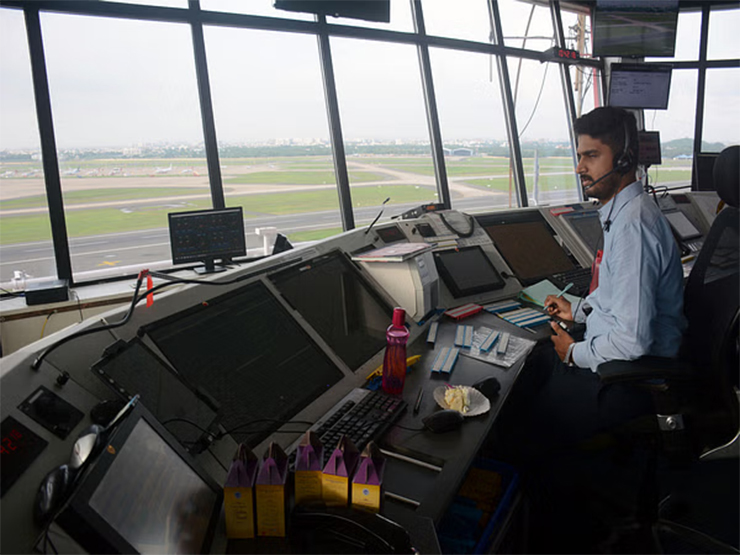
New Delhi: India’s air traffic controllers (ATCO) have blamed a new rating system for adding to their work burden which has led to two cases of aircraft getting dangerously close at Delhi and Ahmedabad airports ever since the new system was implemented.
The ATC Guild India on November 1 wrote to the aviation ministry, Airports Authority of India (AAI) and Directorate General of Civil Aviation (DGCA) against the “implementation of area control (surveillance and procedural) concurrent rating system without conducting any safety assessment.”
While AAI did not comment on this issue, DGCA sources say the issue raised by the ATC Guild is being examined.
The Guild says the new system “has already borne us two airprox/ breach of separation incidents at IGI Delhi and Ahmedabad airports within few days of implementation of concurrent system, and the count will go on if timely action is not taken.”
Guild general secretary Alok Yadav fears ATCOs “will definitely be made scapegoats and lose their hard earned ratings along with mental harassment (while the) root cause is implementation of concurrent area control rating system which hampers the basic technique of a surveillance controller of taking away his/her concentration from his radar scope by forcing him/her to assume the responsibility of area (procedural) controller and provide clearances to field stations, ensure time separations on exit points check, valid authorisations of aircrafts to enter in Indian airspace and, notify and take appropriate actions during priority, emergency radio communication failure.”
“The traffic density at major area control sectors is already high and beyond capacity of two controllers controlling aircraft in surveillance and procedural mode together bearing their functions and responsibilities separately to complement each other and ensure safe provision of air traffic services. Whereas, in new concurrent system the same traffic density is loaded over a single controller to provide all the functions of a surveillance and procedural control without declaration of reduction in sector capacity,” Yadav’s letter adds.
The Guild has requested authorities to implement the new system in a phase-wise manner “as per aviation standards of change management with acceptable limits of hazards and proper mitigation measures to reduce the safety risk under safe limits.”
ATCOs have sought replacing the “current setup of ACC (S) and ACC (P) controllers with two ACC (S&P) concurrent rated controllers with one being responsible for surveillance services and other being responsible for procedural control services during their watch takeover in their respective positions” at major area control centres with high traffic density.















